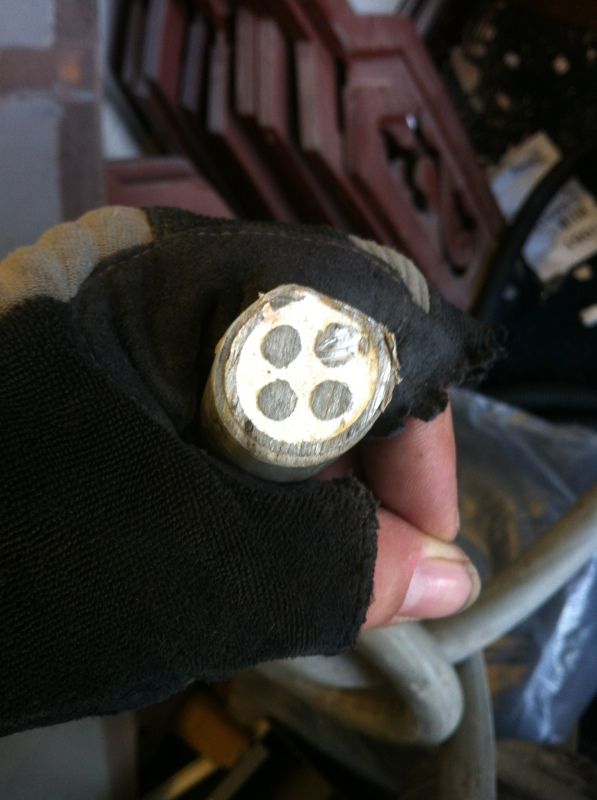That's why the good ol' reg book tables of current start at 16mm and go up to hella big 
You are using an out of date browser. It may not display this or other websites correctly.
You should upgrade or use an alternative browser.
You should upgrade or use an alternative browser.
Copper Clad Aluminium CCA Terminating methods
- Thread starter i_am_fubar
- Start date
Sponsored Links
Sure, but we're talking about 4mm² cable in your kitchen ring (and, as you say the "good ol' reg book" will not help you in determining the CCC of that!)!That's why the good ol' reg book tables of current start at 16mm and go up to hella big
If (which I still doubt
I've never even seen any type of aluminium cable - was/is most/all of it copper clad?
Kind Regards, John
Quite so - I suspect that (unless the cable were ginormous) most of the conductor would have to be copper before it made much difference! As I've been saying, I can but presume that the copper is/was there primarily to reduce surface corrosion.I think the copper cladding would need to be extremely thick to have any noticable impact on CCC, even taking account of skin affect.
In fact, although I think that skin effect is essentially a red herring in relation to any cable likely to be seen in a domestic or commercial installation, the skin depth for copper is only slightly less than that for aluminium, and the conductivity only about 1.5 times greater.
Kind Regards, John
Sponsored Links
More likely that these days aluminium is only used for large cables, where weight is a real issue.That's why the good ol' reg book tables of current start at 16mm and go up to hella big
I've never even seen any type of aluminium cable - was/is most/all of it copper clad?
This was in my parents house. Not too sure on it's provenance, it looks like the house was originally wired in singles (from what I've seen left over) and was rewired in copper T+E in the nineties.
I guess the alu T+E must have been used alongside the singles
With ferrules, you are still crushing the wire itself when a screw is tightened onto it, so there is still the possibility of one or more strands breaking inside the ferrule.Cheers Flame, Is there a particular reason to prefer the pin crimps over ferules?
Thanks! That's clearly not copper clad/coated....This was in my parents house. ....
Kind Regards, John
Nope, definitely just plain old alu. SOOO soft. I made that nick in the core with basically no force
That thumbnail's disgusting! Dirty boy! 


Yup - he needs to make some bread or pastry - that'll clean it up in no time.
If you go to RF's house, eat no pies or sandwiches.
If you go to RF's house, eat no pies or sandwiches.
- Joined
- 11 Jan 2004
- Messages
- 43,959
- Reaction score
- 2,888
- Country

Silly people....
That's what adds the flavour to bread and pastry.
That's what adds the flavour to bread and pastry.
Hard working hands ain't pretty!
DIYnot Local
Staff member
If you need to find a tradesperson to get your job done, please try our local search below, or if you are doing it yourself you can find suppliers local to you.
Select the supplier or trade you require, enter your location to begin your search.
Please select a service and enter a location to continue...
Are you a trade or supplier? You can create your listing free at DIYnot Local
Sponsored Links
Similar threads
- Replies
- 3
- Views
- 1K
- Replies
- 2
- Views
- 1K



